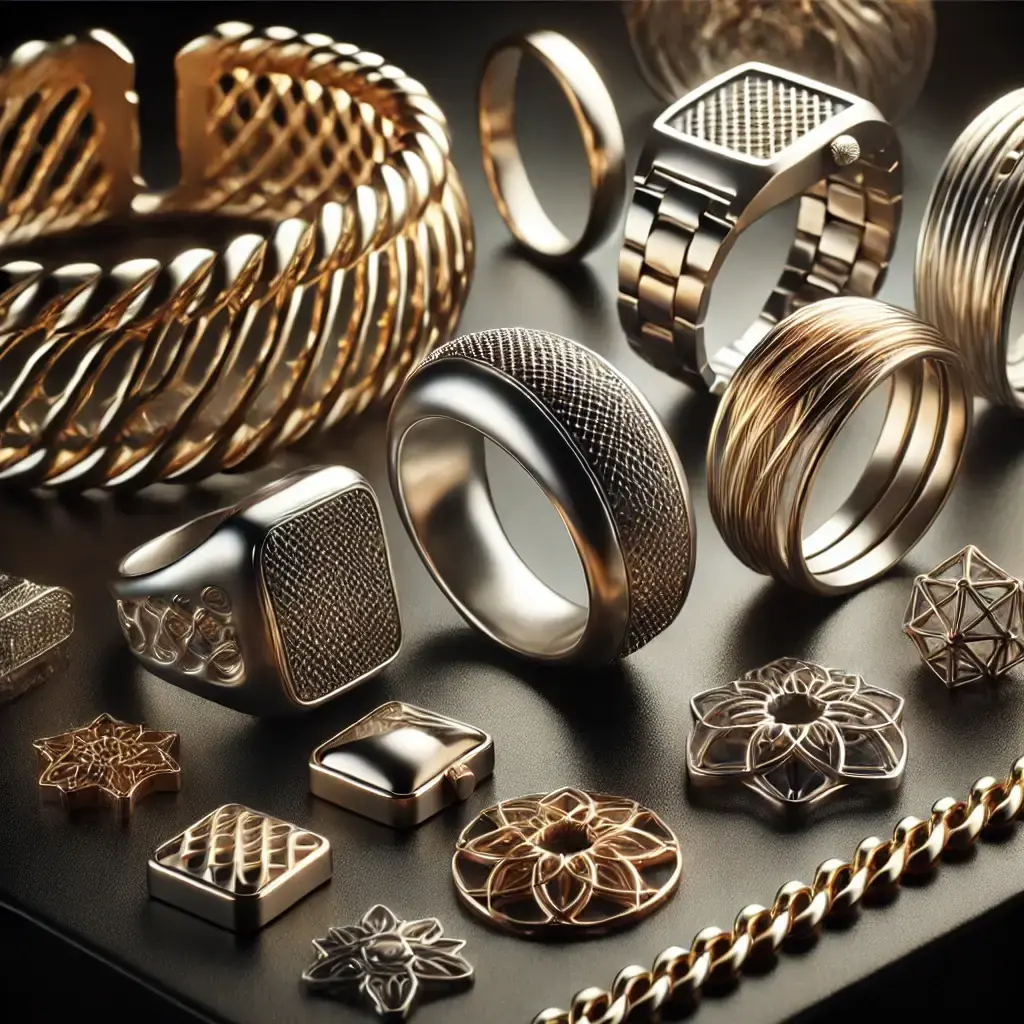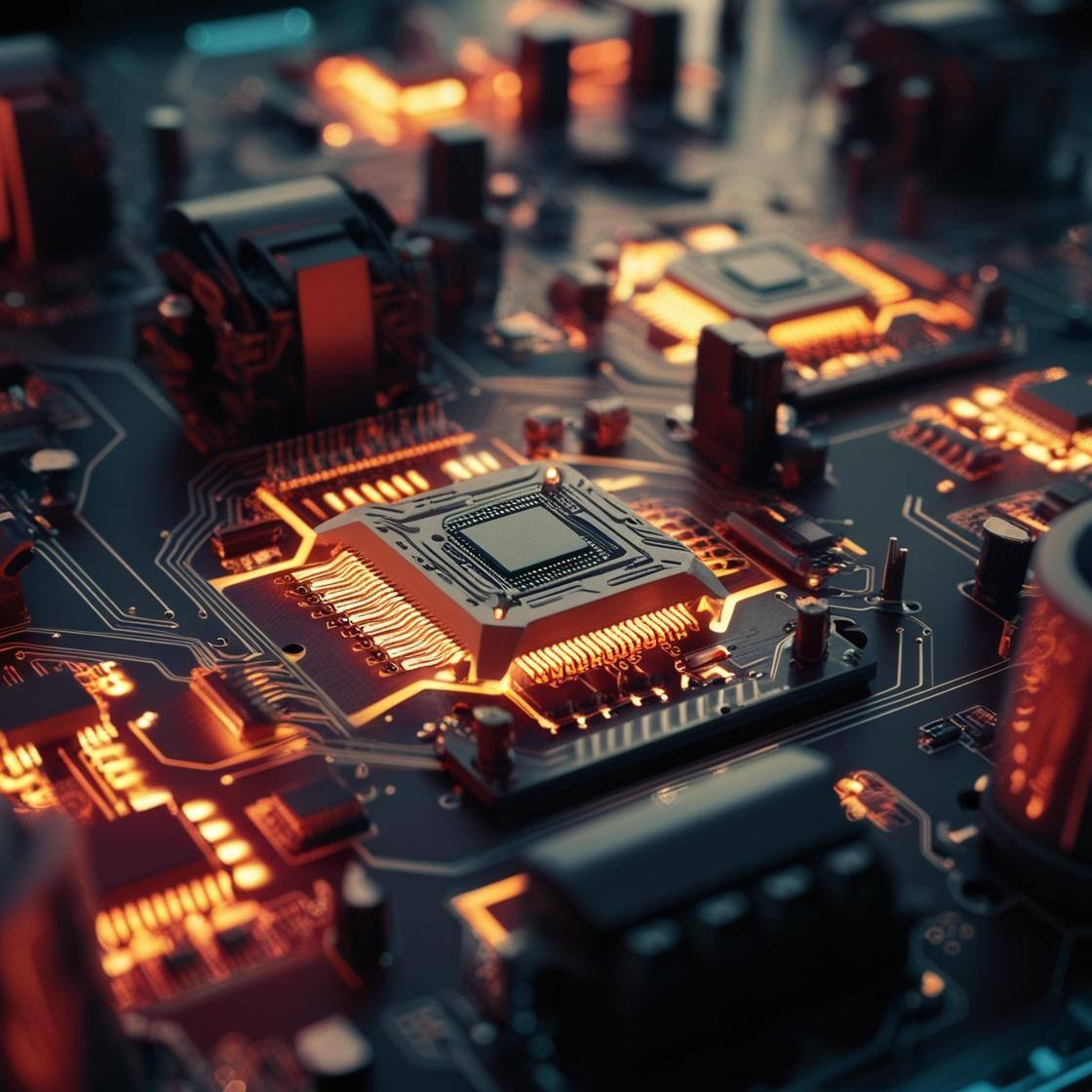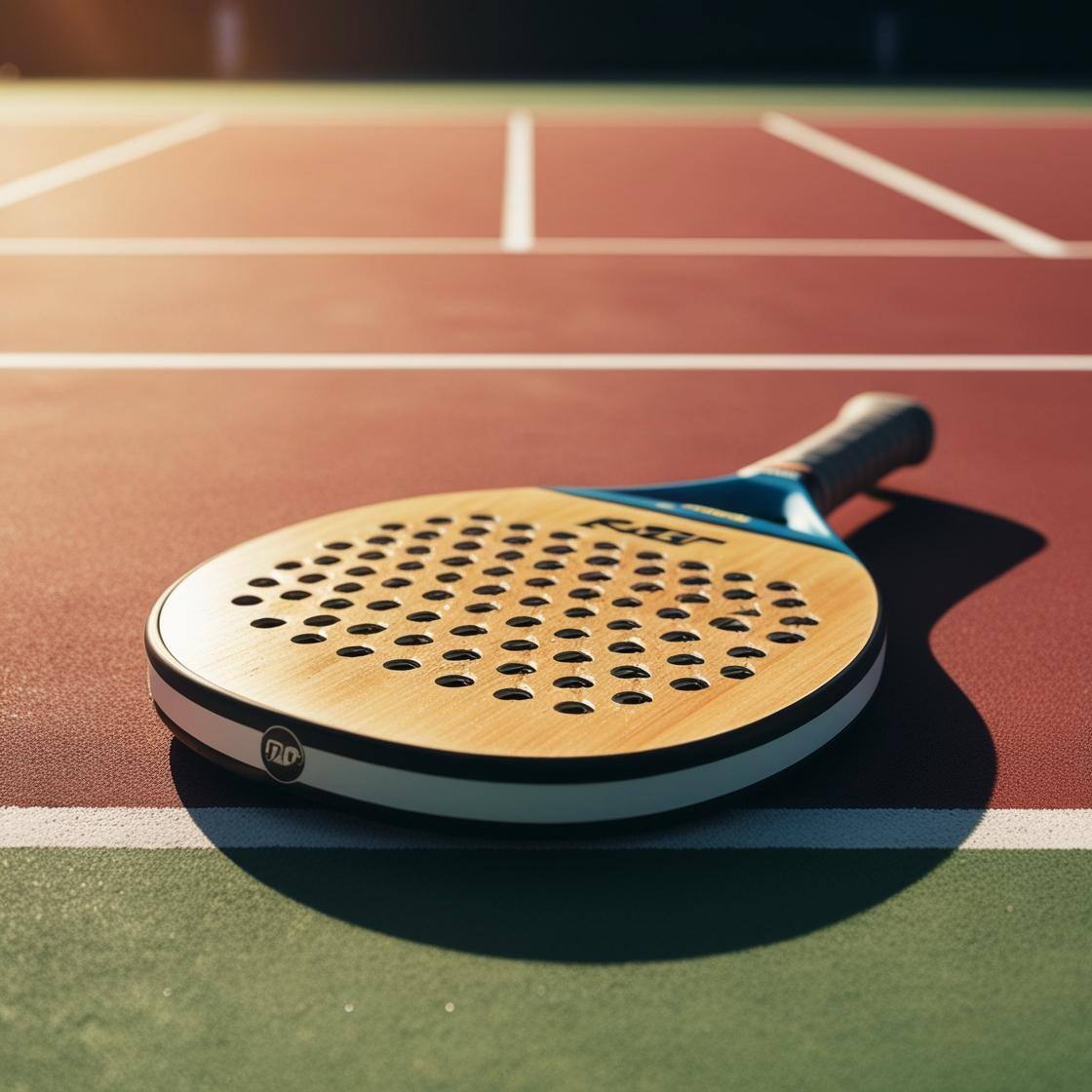6 min read
3D Printing and Nanotechnology
3D printing and nanotechnology are two fields of research and innovation that, at first glance, might appear worlds apart. The former focuses on...

The jewellery sector is undergoing a profound transformation, thanks to the introduction of innovative materials and cutting-edge production technologies. Thanks to 3D printing, it is now possible to create intricate, personalised, and sustainable jewellery with a precision and aesthetic that surpass the limits of traditional manufacturing. Weerg, a leader in additive manufacturing, integrates state-of-the-art solutions such as Multi Jet Fusion (MJF), Fused Deposition Modelling (FDM) and resin printing, combined with next-generation materials like Nylon PA12, TPU, and ECOTech, while also offering advanced finishes like metallic painting. These solutions redefine the concept of design, functionality, and sustainability in jewellery production.
 Nylon PA12: Strength and Versatility
Nylon PA12: Strength and VersatilityNylon PA12, processed through MJF technology, is one of the most high-performing materials in 3D printing thanks to its technical properties. Its high mechanical strength, combined with lightness and uniform surface finish, makes it ideal for creating contemporary jewellery with innovative geometries. The ability to dye PA12 in a wide range of colours allows for a high level of customisation, particularly suited to designers seeking unique solutions or colour experiments. Additionally, PA12 can be treated with metallic painting, available in sophisticated finishes such as gold, silver, bronze, and copper. These coatings not only enhance the aesthetic appeal but also provide a luxurious touch to pieces while maintaining the material’s characteristic lightness and durability.
Thermoplastic Polyurethane (TPU) stands out for its extraordinary flexibility and elasticity, making it particularly suitable for ergonomic jewellery like bracelets and necklaces. Its ability to resist wear and deformation over time makes it an excellent choice for items intended for daily use. In addition to being gentle on the skin, TPU is easily processed in modular configurations, opening up new possibilities for creating dynamic and customisable jewellery.
ECOtech, offered by Weerg, combines a sustainable approach with high technical performance. Made with eco-compatible polymers, it is designed to provide uniform finishes and optimal dermal compatibility, essential for jewellery in contact with the skin. Its sustainable aspect makes it an ideal choice for designers looking to reduce the environmental impact of their creations.
Resin 3D printing is the technology that best meets the aesthetic demands of high-end jewellery. This technique achieves extremely fine details, smooth surfaces, and unmatched aesthetic quality. Among the available options, ceramic resin stands out for its matte and uniform appearance, which adds an elegant and refined touch to jewellery. Ceramic resin is particularly suited for creating luxury accessories such as rings and pendants that require precision and impeccable finishes. Furthermore, it is ideal for creating master models for lost-wax casting, ensuring accurate and detailed reproduction of the original design.
 The Multi Jet Fusion (MJF) technology represents a turning point in jewellery production, enabling the creation of shapes and geometries that would be impossible to achieve with traditional methods. Thanks to a highly controlled thermal sintering process, it allows the production of intricate details, ultra-lightweight lattice structures, and integrated moving components without the need for additional assembly. These characteristics make this technology particularly suited for creating unique designs, such as pendants inspired by nature or bracelets with complex, dynamic textures. All this is achieved while maintaining product robustness and dimensional stability.
The Multi Jet Fusion (MJF) technology represents a turning point in jewellery production, enabling the creation of shapes and geometries that would be impossible to achieve with traditional methods. Thanks to a highly controlled thermal sintering process, it allows the production of intricate details, ultra-lightweight lattice structures, and integrated moving components without the need for additional assembly. These characteristics make this technology particularly suited for creating unique designs, such as pendants inspired by nature or bracelets with complex, dynamic textures. All this is achieved while maintaining product robustness and dimensional stability.
Fused Deposition Modelling (FDM) is particularly suited for functional prototyping, used to test shapes, volumes, and ergonomics during the design phase. By using composite materials and technical polymers, FDM ensures reliable control of physical and volumetric characteristics before final production.
Finishes are essential for transforming a 3D printed object into a finished product ready for the market. Weerg offers a comprehensive range of advanced finishing solutions designed to enhance the aesthetic appeal, tactile quality, and functionality of jewellery.
Metallic painting are one of the most sophisticated options for 3D printed jewellery. Applied primarily to objects made of Nylon PA12 using MJF technology, these finishes provide a realistic metallic appearance in tones like gold, silver, bronze, and copper. The painting adds a luxurious touch without altering the structural properties of the pieces.
Vapor Smoothing is a cutting-edge post-processing technique that uses chemical vapours to smooth the surfaces of 3D printed objects. During the treatment, solvents interact with the material, dissolving surface ridges and creating a smooth, uniform finish. By reducing porosity, the result is a polished surface that enhances the design without compromising the material’s mechanical properties.
Another highly customisable finishing option is Nylon PA12 dyeing. This process achieves uniform colouring while maintaining the material’s technical characteristics. A wide range of shades is available, expanding the creative possibilities for uniquely designed jewellery. Dyeing is particularly effective for complex pieces or those with tight tolerances, where uniform colour penetration improves aesthetics without altering the object’s dimensions.
3D printing is transforming every aspect of jewellery, opening up new creative and functional possibilities. The technologies and materials offered by Weerg enable the creation of unique, customisable jewellery with exceptional aesthetic results.
 Rings
Rings3D printed rings can be created using technologies such as resin printing or Multi Jet Fusion. Ceramic resin is particularly suitable for crafting complex and detailed designs with smooth and matte surfaces, making it ideal for luxury and high-end jewellery. Nylon PA12, on the other hand, offers strength and durability, making the ring perfect for everyday use. With the ability to dye PA12 in various colours or apply metallic coatings that mimic gold, silver, and copper, designers can achieve unique and personalised combinations while maintaining lightness and comfort. A process like Vapor Smoothing can be employed to make PA12-printed rings even smoother and more pleasant to the touch, enhancing the overall experience for the wearer. This combination of techniques guarantees a final product that blends refined aesthetics with durability.
3D printing enables the creation of pendants and necklaces with complex geometries and intricate details that would be impossible to achieve with traditional methods. Resin printing is perfect for achieving smooth surfaces and precise details, while Nylon PA12, processed with MJF technology, provides lightness and mechanical strength, making pendants suitable for daily wear. A PA12 pendant can be dyed in vibrant colours or treated with Vapor Smoothing for a uniform finish and a pleasant feel. The application of metallic coatings to these pieces adds an elegant touch, transforming them into high-quality aesthetic jewellery. Additionally, necklaces can benefit from the use of flexible materials like TPU, ensuring elasticity and comfort for creating ergonomic and dynamic accessories.
3D printed bracelets provide an ideal opportunity to experiment with innovative designs and modular configurations. Resin printing is perfect for creating bracelets with smooth surfaces and intricate details, while TPU is ideal for producing flexible, comfortable, and durable bracelets suited for dynamic everyday use. For more rigid bracelets or contemporary designs, Nylon PA12 proves an excellent choice. It can be dyed or treated with Vapor Smoothing to achieve smooth and soft-to-the-touch surfaces, while metallic coatings add a luxurious appearance. Furthermore, sustainable materials like ECOTech are perfect for crafting bracelets that are gentle on the skin and feature a uniform finish, ideal for those seeking to combine aesthetics and sustainability.
By integrating advanced 3D printing technologies, innovative materials, and premium finishing options, Weerg offers jewellery designers a unique platform to turn creative ideas into tangible objects. The combination of materials such as TPU for flexibility, ECOTech for sustainability, Nylon PA12 for versatility, and ceramic resin for unmatched aesthetics meets even the most complex demands of the jewellery industry. Metallic finishes and other post-processing solutions add further aesthetic value, transforming each piece into a one-of-a-kind creation. Weerg positions itself as the ideal partner to lead the future of jewellery design, with a focus on innovation, sustainability, and refined craftsmanship.

6 min read
3D printing and nanotechnology are two fields of research and innovation that, at first glance, might appear worlds apart. The former focuses on...

6 min read
Padel has seen exponential growth in Italy and worldwide in recent years. A glance at sports clubs in major cities and smaller towns alike reveals an...

6 min read
The game of chess boasts a history spanning millennia, seamlessly merging art, strategy, and culture into a singular experience that has captivated...